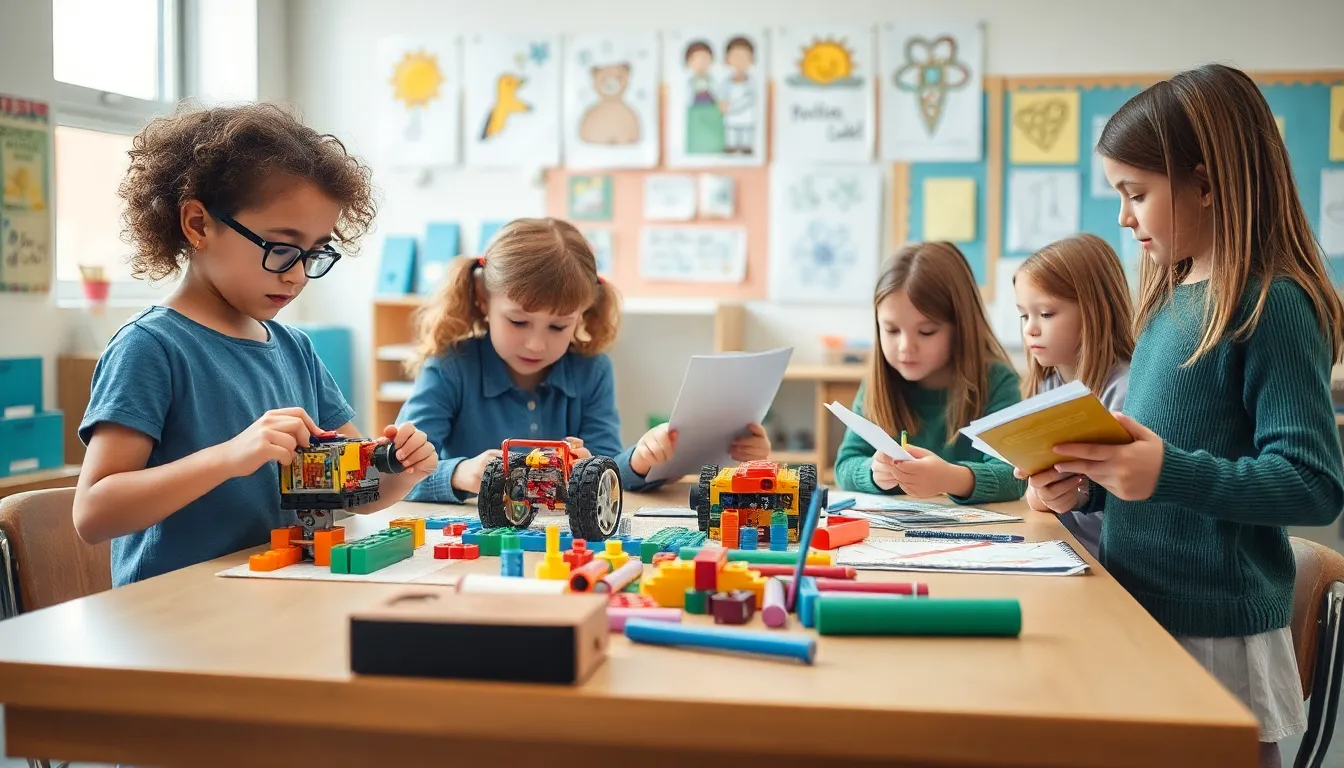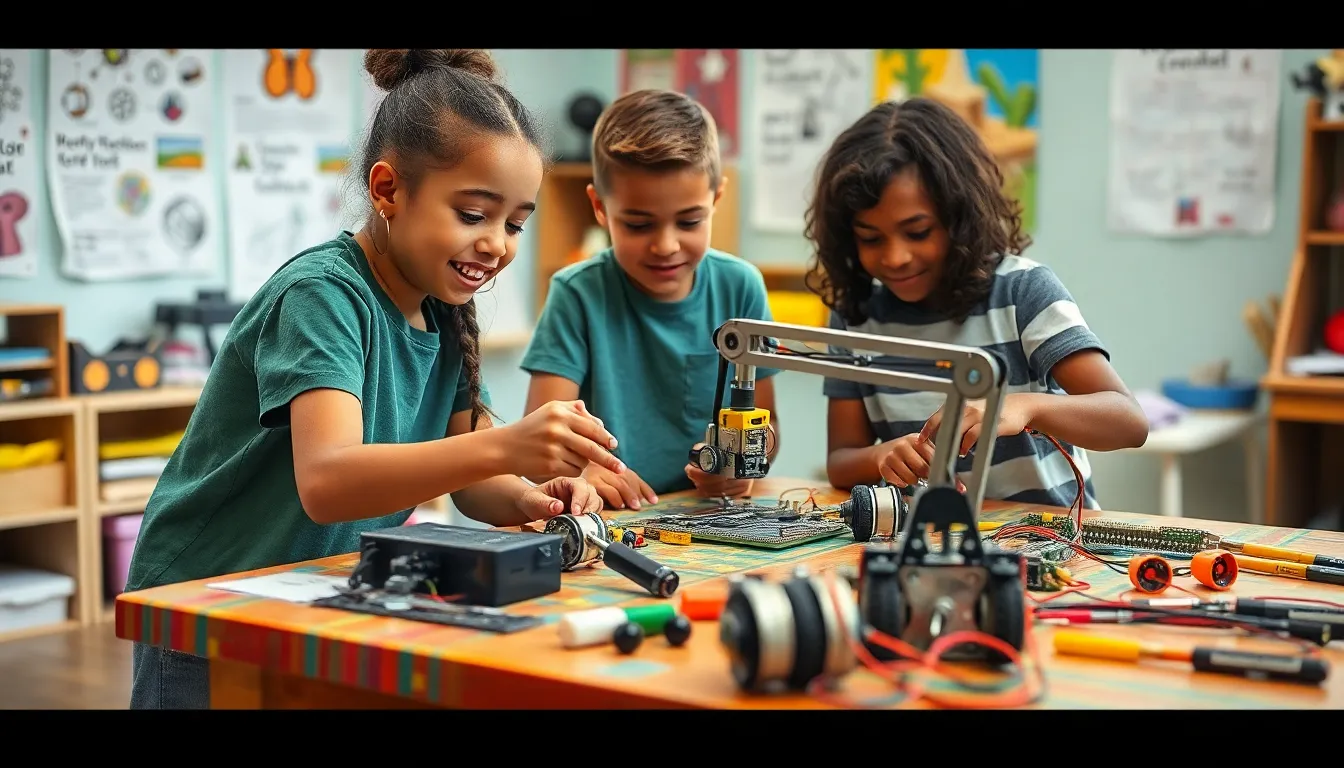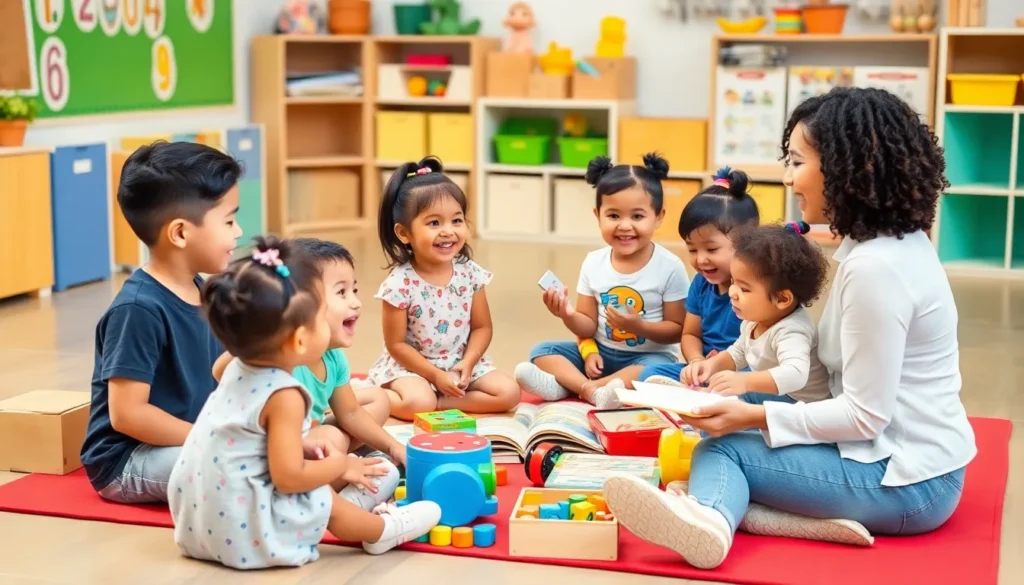Table of Contents
ToggleIn a world where technology evolves faster than a kid can say “I want a snack,” STEAM education has emerged as the superhero of modern learning. Combining Science, Technology, Engineering, Arts, and Mathematics, it’s like giving kids a toolbox filled with creativity and critical thinking skills. Forget the boring lectures; this is education that encourages exploration and innovation, all while having a blast!
What Is STEAM Education for Kids?
STEAM education for kids involves a collaborative approach that integrates five key disciplines: Science, Technology, Engineering, Arts, and Mathematics. This educational framework encourages hands-on learning experiences, allowing children to engage with concepts in a practical manner. With science, students explore natural phenomena, fostering curiosity and comprehension.
Technology plays a crucial role by providing tools and resources that enhance learning. Engineering challenges students to apply principles to design and build projects. Arts stimulate creativity and expression, essential for holistic development. Mathematics equips kids with analytical skills, necessary for problem-solving.
The integration of these disciplines promotes critical thinking, encouraging young learners to question and investigate. Kids develop a deeper understanding of real-world applications by connecting these subjects. Projects often emphasize collaboration, leading to the development of teamwork and communication skills among peers.
STEAM education can manifest in various formats, such as after-school programs, workshops, and summer camps. Examples include robotics clubs, coding classes, and art-based science projects. These activities not only engage students but also ignite passion for learning.
Ultimately, this approach prepares children for future careers by equipping them with versatile skills. Exposure to STEAM concepts at an early age nurtures innovation and adaptability, traits valuable in an ever-evolving job market. As children navigate the interconnected nature of these disciplines, they build a strong foundation for lifelong learning.
Benefits of STEAM Education for Kids

STEAM education offers numerous advantages for children’s overall development. It enhances their academic and practical skills in various disciplines.
Encouraging Critical Thinking
Critical thinking skills flourish in a STEAM environment. Students analyze problems and evaluate solutions through hands-on projects. They engage in discussions, asking questions that lead to deeper understanding. Situations arise where learners must make decisions, helping them develop reasoning capabilities. Observing outcomes from their choices strengthens their analytical thinking. As a result, kids learn to approach issues methodically, preparing them for complex real-world challenges.
Fostering Creativity
Creativity thrives when children participate in STEAM activities. Students express themselves through art, design, and engineering projects. Collaboration with peers sparks new ideas and innovative approaches. They utilize various materials and techniques to bring their visions to life. Unconventional thinking becomes a natural part of the learning process. This creative exploration prepares them for future fields that value originality and inventive problem-solving.
Effective Strategies for Implementing STEAM
Implementing STEAM education requires effective strategies that enhance engagement and learning for children. These strategies focus on active participation and the integration of technology within the classroom.
Hands-On Learning Activities
Hands-on activities form the backbone of effective STEAM education. Engaging in experiments or building projects encourages active learning. Children cultivate skills while applying theoretical concepts to real-world challenges. Projects like creating simple machines or conducting science experiments promote teamwork and problem-solving abilities. Furthermore, arts and crafts can coincide with engineering tasks, allowing students to explore creativity through design. Opportunities for exploration spark curiosity and inspiration among peers. Providing clear objectives guides students throughout the activity, ensuring they understand the learning outcomes.
Integrating Technology
Integrating technology amplifies the impact of STEAM education. Utilizing tools like coding apps or robotics kits allows students to explore new concepts. Advanced platforms enhance collaboration, enabling real-time project sharing and feedback. Virtual simulations in science and engineering encourage critical thinking and experimentation in safe environments. Additionally, online resources provide access to diverse learning materials, catering to various learning styles. By embracing technology, educators enhance learning experiences and prepare students for a digitally driven world. The combination of traditional and modern techniques fosters versatile skills essential for future careers.
Challenges of STEAM Education for Kids
Implementing STEAM education presents various challenges. Funding limitations often hinder program development, especially in under-resourced schools. Teachers may lack adequate training in integrating all five disciplines effectively, impacting the quality of education delivered.
Curriculum alignment poses another challenge. Many schools focus primarily on standardized testing, neglecting the creative aspects of STEAM. Balancing curriculum requirements with innovative teaching techniques is essential yet difficult for educators.
Access to materials can be problematic. Schools might struggle to obtain the necessary resources, such as science kits or art supplies. This lack of resources limits hands-on experiences that are crucial for effective STEAM learning.
Engaging students consistently remains a challenge. Diverse learning styles and interests require tailored approaches. Captivating every child’s attention in a mixed-ability classroom demands creativity and adaptability.
Collaboration is vital in STEAM activities. Students must develop teamwork skills, but many lack experience working with peers toward common goals. Educators need to foster a supportive environment that encourages this collaboration.
Assessment practices require careful consideration. Traditional methods may not accurately measure the creativity and problem-solving skills inherent in STEAM learning. Implementing alternative assessment strategies can provide a more comprehensive view of student progress.
The ever-changing nature of technology impacts STEAM education as well. Keeping up with new tools and trends can overwhelm both educators and students alike. Regular professional development for teachers is essential to navigate these technological advancements effectively.
Addressing these challenges ensures that STEAM education thrives, equipping children with the skills needed for an evolving job market. Essential support, collaboration, and innovation can create a strong foundation for future learners.
Embracing STEAM education is vital for preparing children for a future filled with opportunities. By integrating science, technology, engineering, arts, and mathematics, kids develop critical thinking and creativity that are essential in today’s world. The hands-on approach fosters collaboration and practical problem-solving skills that traditional methods often overlook.
As educators and parents recognize the importance of this innovative framework, they can better equip children with the versatile skills needed in an ever-evolving job market. Overcoming challenges related to funding, training, and curriculum alignment will ensure that STEAM education flourishes. Ultimately, investing in STEAM not only enriches children’s learning experiences but also ignites a lifelong passion for inquiry and discovery.




